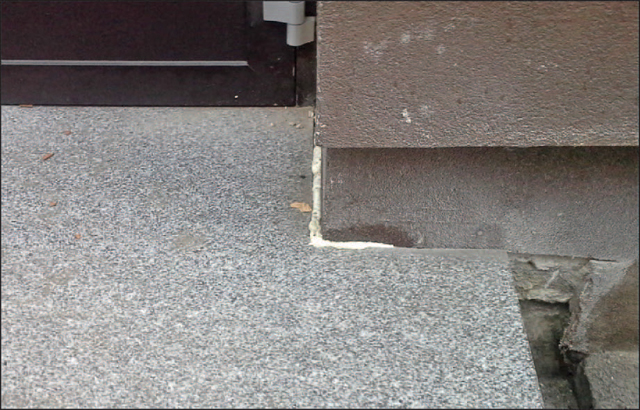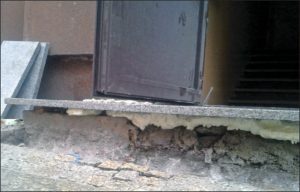CARPENTER TURNING STONEMASON

I thought I had seen it all in my life. However, one Saturday afternoon as I was walking around “the granite city”, I saw something that surpassed my worst nightmares. It turns out my understanding of human inventiveness is still rather limited.
What made me examine the pavement I was walking on? What drew my attention in the centre of Polish stonemasonry? I spotted expanding foam bulging from between a coping stone and a building.
That in itself doesn’t have to mean anything. Thankfully, the construction workers had packed up and left before the sun went down, and so I was able to examine what was under one the of granite paving stones. What I saw was…a mixture of wedges and expanding foam.
The only upside was that the workers had used frost-resistant foam. However, when installing stone paving, it is not possible to use expanding foam as a load-bearing element. The foam is soft and the supplier – possibly in an attempt to cut costs – used a 2 cm paving stone that was bound to break soon. As we can see in the photograph, the paving stones are basically placed on wooden wedges. Bravo!
The EN12058 standard for floor and stair paving stones clearly specifies the steps of the installation process. Floor and stair paving stones can only be installed on mortar in accordance with the norm EN 998-1 (inorganic binder) or binder in accordance with the norm EN 12004 (cement, dispersion, and resin reactive binder). Using expanding form is not permitted.
The explanation for this misconduct is most likely trivial – it is quite possible that the construction workers laying the pavement in question mostly install windows, doors and garage doors, which is why they consider expanding foam a universal binder. However, this will hardly do as an excuse when the newly laid granite paving stones start to break.

Source: Kurier kamieniarski
Author: Michał Firlej | Published: 3.11.2015
